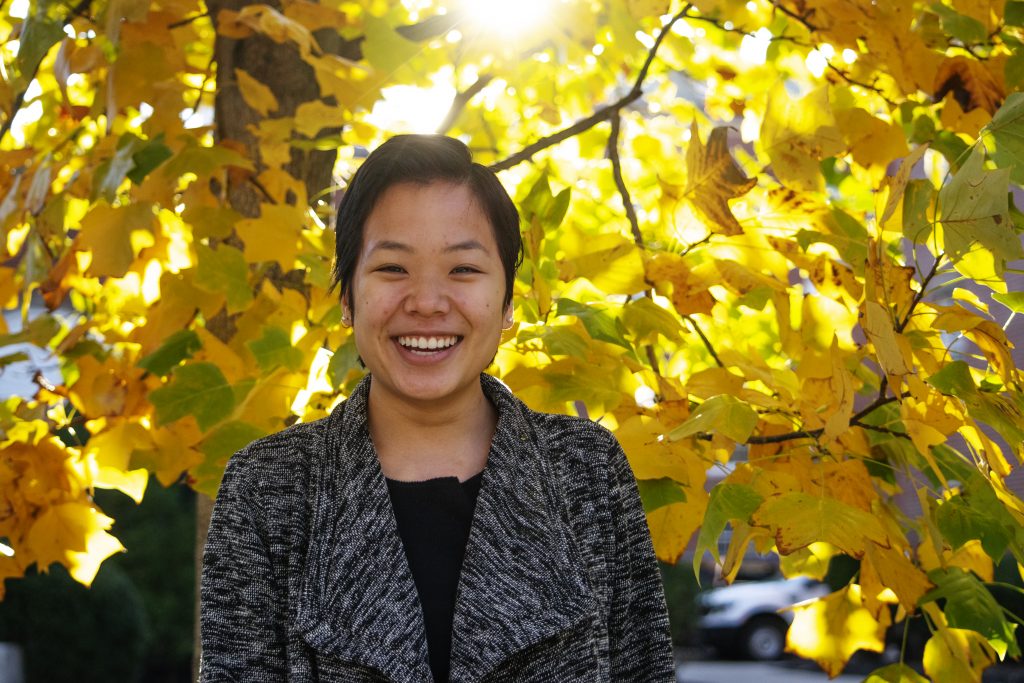“All you need to do is say no.”
“Condoms and birth control are the only forms of contraception you’ll need to know about.”
“You’ll only get an STI if you sleep with many people”
These were all things that were taught to me in high school sexual health classes. In the beginning of high school, I did not see much of an issue with this kind of rhetoric and half listened as I drew flowers in my notebook or passed notes to a friend.
“At my high school we learned abstinence only.”
“We only learned how to put a condom on a banana.”
“We watched the video of the woman giving birth.”

These were all things that I heard during my first year of college when talking to friends about different education they had received in high school around sex and sexual health. The lack of information and understanding around consent, STIs, one’s body, and LGBTQ+ communities is potentially dangerous and harmful to everyone involved. In a study done by the Gay, Lesbian, Straight Education Network in 2019 it was reported that 58.3% of LGBTQ students were sexually harassed at school in the past year, and it is suspected that the number is underreported. Engaging in relationships and sexual activity should be something that is enjoyable for all involved, but it’s difficult for that to happen when one or more parties are not educated about their bodies, consent, and how to communicate with the person or people they are engaging with. Incorporating comprehensive sex education, like the Healthy Youth Act is proposing to ensure, would have many benefits; I want to share three benefits that feel especially meaningful to me.
The first benefit of incorporating comprehensive sex education is to educate people on their bodies and provide medically accurate information on how bodies develop and debunk social expectations around performance during sex. Throughout my time in college, I have heard many people mention different things about how they are not sure of how their bodies work or if they perform normally. I have a friend who one day started bleeding but did not know it was their period until they went to their nurse’s office. This was a really scary experience for them because they did not have any idea what was happening to their body before asking the nurse. Age-appropriate education about bodies and sexual health, which is proposed within the Healthy Youth Act, is crucial to prevent this. With this knowledge more people would know if something was normal – or abnormal – with their bodies, and it would reduce certain stigmas around how our bodies work, especially during sex.
The second benefit of incorporating comprehensive sex education is to familiarize students with LGBTQIA+ concepts. The Healthy Youth Act requires schools to choose a sex ed curriculum that includes this information. By exposing students to this information, it would help students learn about their own identities while also helping their peers learn about their identities which would further reduce stigma. For me, as a queer person, I would have loved to learn about different sexualities and gender identities in school. A lot of my high school education around identity was through searching online and talking to friends. While looking online for information about queer identities, it was hard to know what websites I could trust. There were a few harmful sites that I ran into that promoted conversion therapy and other forms of “fixing” my queerness. These websites and ads scared me and reinforced the idea that there was something wrong with me being queer. I was privileged in the fact that I had supportive friends and a parent who was accepting, but this is not the case for all queer youth. There was this secret element to discovering my identity when I was younger, and I wish I had a space to discuss identity freely. With the Healthy Youth Act, students would be able to discuss these concepts in school and discover their identities in hopefully a safer environment.
The third benefit of incorporating comprehensive sex education is that educating all students about consent would help students navigate difficult and often awkward conversations regarding sex and consent. Most of us were awkward in high school, even if we pretended to play it cool. It is awkward to talk about sex and pleasure, and for most high schoolers it is one of the first times they are engaging in this conversation. Although it is awkward in the beginning to discuss sex and pleasure, a lack of conversation and knowledge about consent between the involved parties can cause harm if not addressed. It is important to note that in 2019, 10.8% of high school students had experienced sexual violence. The Healthy Youth Act would implement discussions in schools about boundaries in and out of a relationship context and how to have these conversations which would reduce the pressure for both parties to “fake it till you make it” and pretend they know what they’re doing. It would potentially set up an environment where it would be normal to have conversations with a partner or a hookup about boundaries and pleasure. Giving high school students tools to have these conversations is crucial and a skill I wish I was taught at that age.
The Healthy Youth Act proposes requiring the aspects I talked about and more. While it wouldn’t require schools to teach any sex ed, it would ensure that those who do so would be required to teach medically accurate, LGBTQ inclusive, and comprehensive curriculums. I went to high school in Massachusetts and would have greatly benefited from the opportunity to have medically accurate and comprehensive sexual health education. I hope this bill is passed so that younger people will have the opportunity to learn about their bodies, their identities, and their relationships with others.
Please let your legislators know that you support this bill: Learn more about the Healthy Youth Act by clicking here.





